Munich High End 2023 Show Highlights
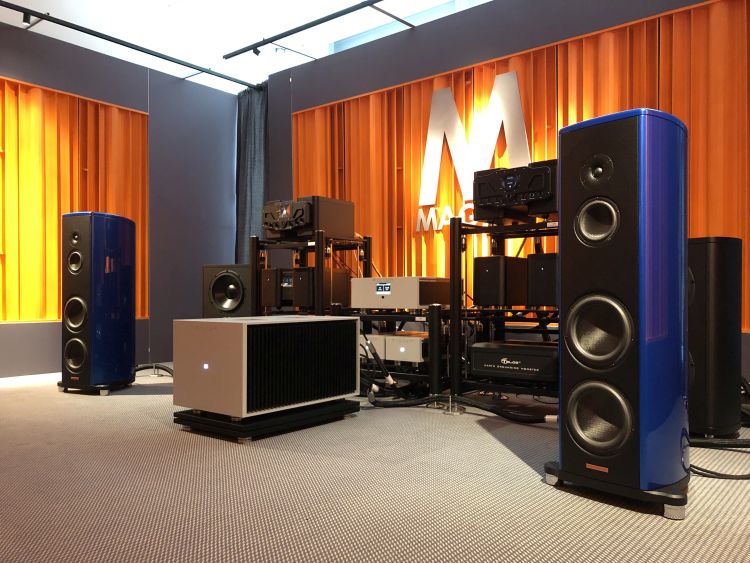
Diptyque with B.audio
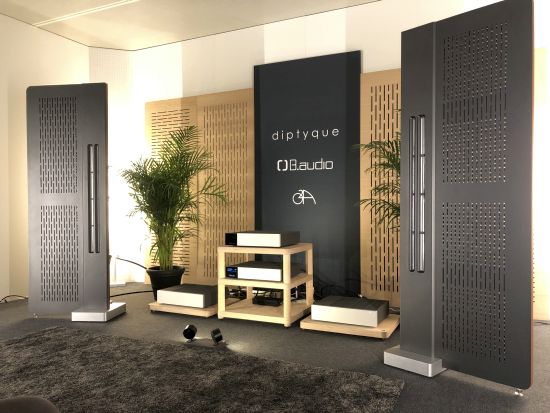
The Diptyque Reference is one of the speakers that I have for some time been looking forward to hearing. Regular readers will know that I reviewed the Diptyque DP107 in January last year. That was the second-smallest Diptyque speaker while the Reference is the top model. Its origin story is interesting, so I will copy it below.
Diptyque Reference
In March 2020, during the first COVID 19 containment, everything stopped but our imagination! In this suspended time, we dreamed of an ultimate loudspeaker, without compromise, capable of reproducing the entire spectrum from infra-bass to ultrasound with all the naturalness, speed, and transparency that only isodynamic technology is capable of reproducing with perfect consistency. As a sign of providence, at the same time, we received a phone call from Philippe Teissier du Cros, a fabulous sound engineer who has been practicing his art for many years with our favorite musicians. We asked him to accompany us in this ambitious project, to which he responded with enthusiasm! The specifications for the Diptyque reference were born out of our questions and passionate exchanges. We questioned all the existing technical solutions, in particular, to obtain powerful and controlled low frequencies down to the infra-bass. Our research and innovation work led us to develop a totally new technology that we have patented: the “Crossed Push-pull”.
Each bass cell is driven by two independent coils (set of ribbons), one vertical and one horizontal. This exclusive technology allows the 12 µm mylar membrane to be set in vibration by hundreds of small square motors. The “crossed push-pull” technology allows controlling the vibrations of the membrane without deformation. This guarantees very linear low frequencies, without distortion and with much greater efficiency than existing isodynamic systems.
For the midrange section, we developed a new 20mm isodynamic ribbon that covers a wide spectrum from 600 to 7000 Hz, and for the high-frequency section, a super tweeter in pure aluminum of 8mm that goes beyond 24000 Hz.
With the Diptyque Reference, we have made our dream come true!
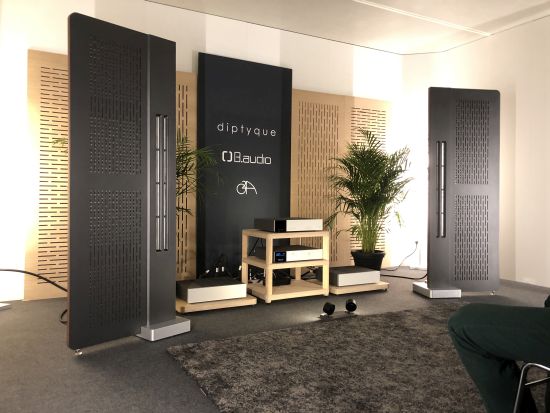
Listening
One might expect a big sound from a big panel speaker such as the Diptyge Reference, but potentially a little slow, lumpy, or perhaps even incoherent, but the Reference proves all these preconceptions wrong. It sounds remarkably tight and articulate, amazingly coherent, and superbly transparent. The midrange is utterly neutral and uncolored but perhaps a little lean. But that’s probably nothing that full-sounding electronics or cables couldn’t address. Likewise, the bass is tight, nimble, and fast, a little lean, but deep-reaching and superbly precise.
Next to the range-topping Reference model, Diptyque also showcased the brand-new DP140 MkII and DP160 MkII models. Of these, I heard the smaller DP140 MkII model. Sonically, it sounds quite similar to the Reference, with similar tightness, precision, and transparency, and again vanishingly low coloration. If not quite as full-bodied as the Reference in the bass and lower midrange, the DP-140 MkII’s upper midrange and treble were arguably even more delicate and airy.
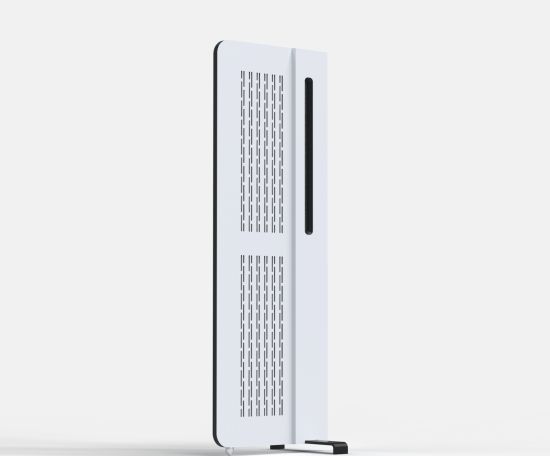
DP140 MkII
The new Diptyque DP140 MKII marks a new generation of isodynamic speakers made up of two bass-medium cells operating according to the PPBM (Push Pull Bipolar Magnet) principle that is optimized after ten years of research and innovation. Their mechanical structure is inherited from the Reference model. The 55 cm long ribbon tweeter covers a large bandwidth.
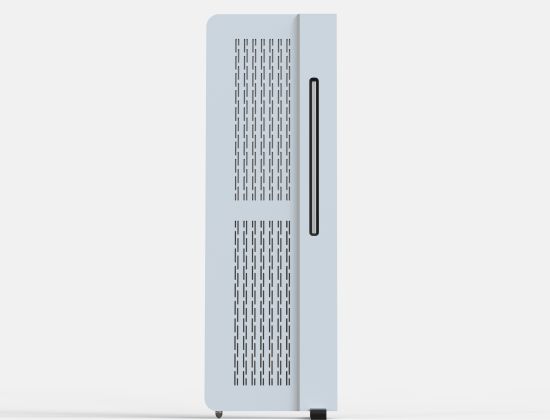
DP160 MkII
The new Diptyque DP160 MKII concentrates all the know-how for the design of high-end isodynamic speakers designed for the most demanding music lovers. They are composed of two bass-medium cells operating according to the optimized PPBM principle. They are calibrated in their tension in order to obtain a more extensive and linear bass. Their mechanical structure is inherited from the Reference model. The 65 cm long ribbon tweeter covers a large bandwidth.
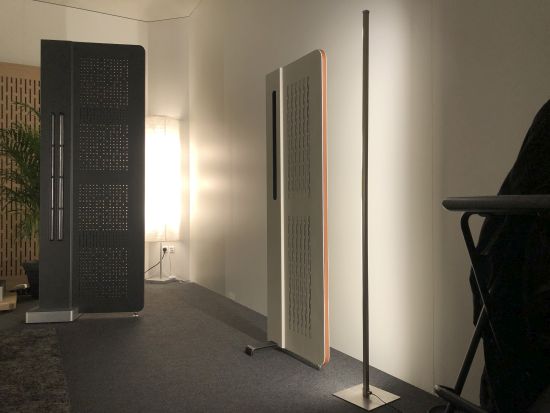
I think the DP160 MkII and DP160MkII look stunning in white but they are also available in dark grey or optionally 160 RAL colors.
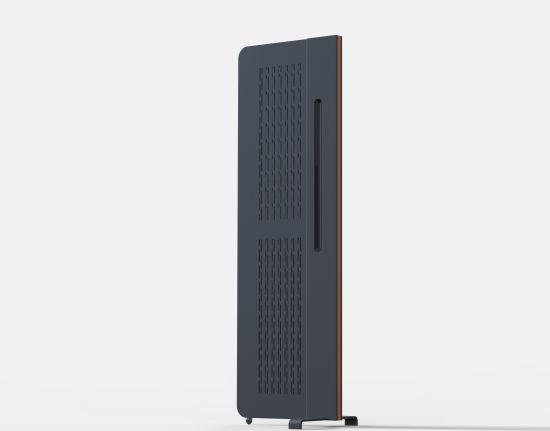
HiFi Deluxe show in the Marriott Hotel
As usual, the Hifi Deluxe show is held during the same days (Sat + Sun) and there is a free shuttle bus to transport visitors from the High End show. The HiFi Deluxe show continues until 20:00 which is great if you still have some energy or want to unwind in a different environment after visiting the High End show which ends at 18:00 on Saturday.
Seawave Acoustic
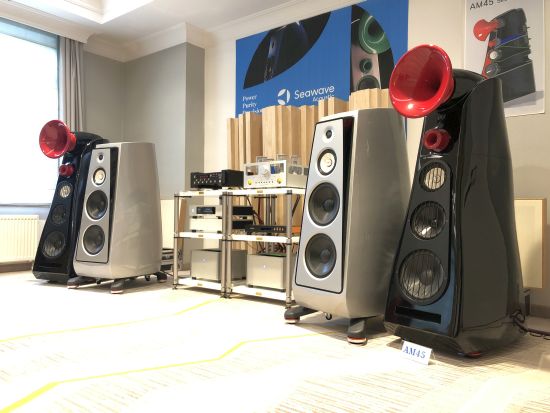
After my review of the Seawave Acoustic Aletheia and AM23 speakers, I was interested to hear the big models. My wish was granted when I encountered designer Bo San demonstrating the Seawave Acoustic AM-45. Sure enough, these speakers sound as dynamic, direct, and expressive as they look, yet with superb neutrality, great linearity, and the least horn coloration that I have encountered in a horn speaker.
Marco Serri Design
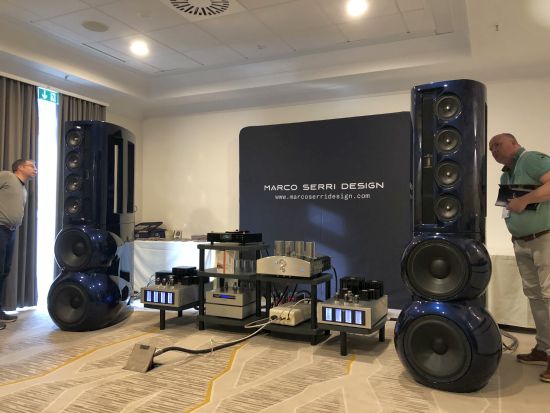
These big blue towers are Marco Serri Design Gladiator 5-way speakers – an interesting encounter. Upon first sight, I figured the stunning visual appeal would probably not be matched with superb performance but the inverse was the case. These speakers sounded beautifully transparent, coherent, linear, open, delicate, and airy and the bass went deep but was nimble, very accurate, and absolutely never overbearing. Upon closer inspection, it turned out that the speakers use a small treble ribbon, a big midrange ribbon, and 4 dynamic mid drivers, all mounted in an open-backed enclosure. Below is more official information.
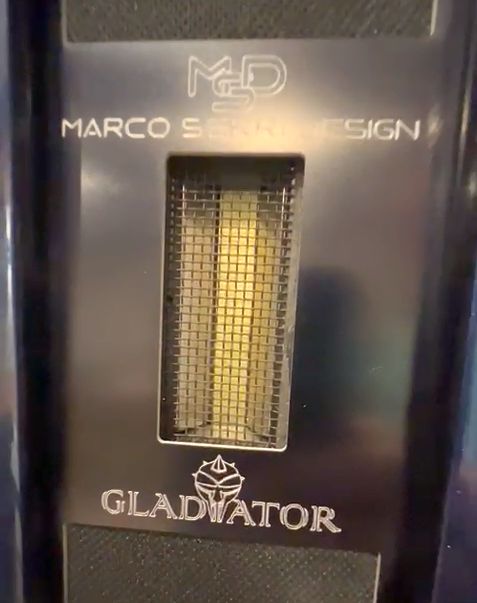
The speaker incorporates a specialized 42 cm custom driver tuned to 16 Hz for the low-frequency range, paired with a properly cross-matched 38 cm woofer, both housed in separate chambers and volumes within the same cabinet to ensure maximum extension, articulation, and the necessary punch to reproduce every single tone of the lowest frequencies without delay. From 250 Hz and above, the speakers are used as dipoles. They will be coupled with an array of four 16.5 cm cone mid-woofers from Res Audio, with a high cut-off frequency at 600 Hz.
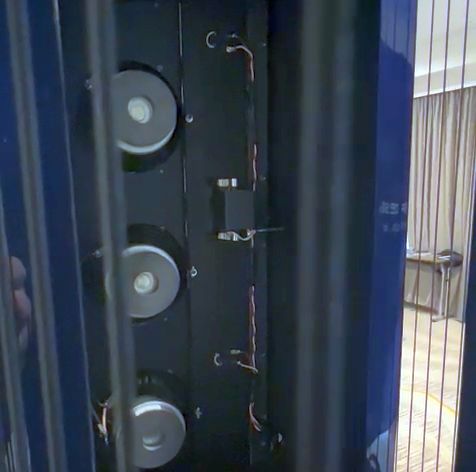
No crossover frequency cuts are employed from 600 Hz up to 20,000 Hz, and the four planar magnetic speakers used for the mid-high range guarantee absolute coherence and transparency of sound in the most sensitive area to the human ear, even at extreme volumes. An optional ribbon super tweeter completes the ultra-high range. The speaker is constructed from reinforced synthetic resin and the crossover is housed in a separate and decoupled frame, equipped with external controls for adjustments to various environmental conditions.
This concludes the HFA Munich highlights for this year!
Munich High End
HIGH END SOCIETY Service GmbH
Vorm Eichholz 2g
42119 Wuppertal
Phone: +49 202 702022
E-mail: info@highendsociety.de
www.highendsociety.de
Contact:
Claudia Kazner
Press and Public Relations
HIGH END SOCIETY
E-mail: kazner@highendsociety.de
HiFi Deluxe
Dieter Mallach
Towersgarten 11
D-45239 Essen
Phone: 0201 408084
E-mail: info@hifideluxe.de
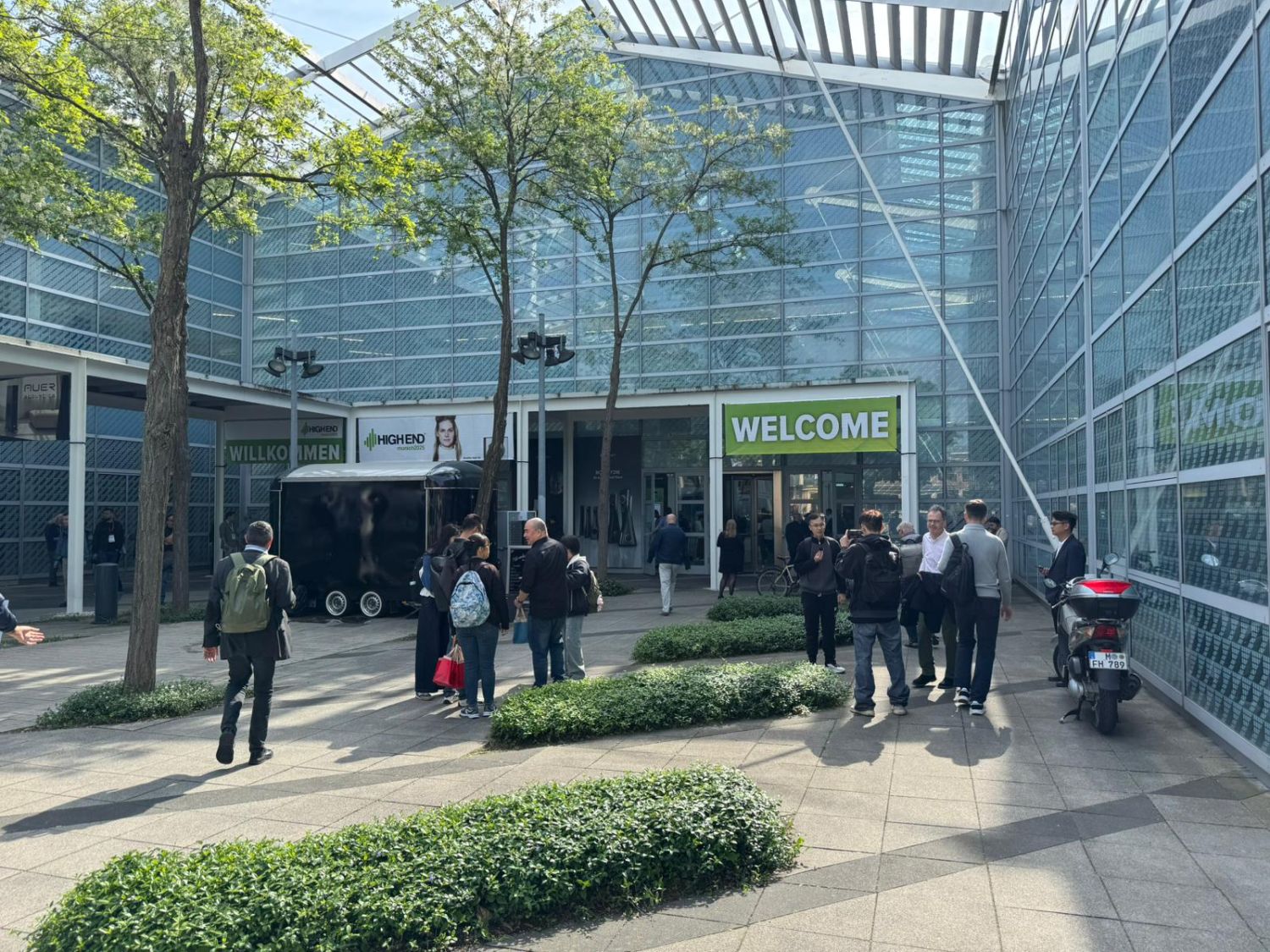
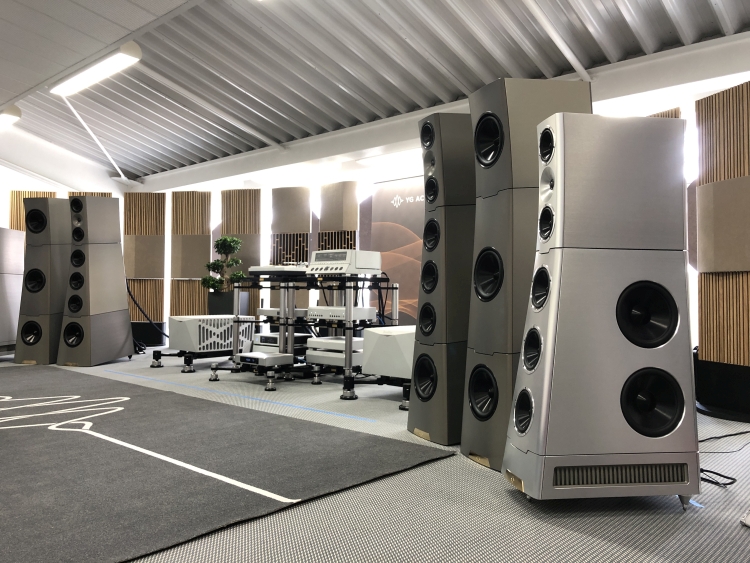



Hi Christiaan,
just read your impressions: well written as always.
The visit to the Marriott, the big Marco Serri loudspeakers… and the big electronics so “fluid” and “harmonic”… transparent, coherent, linear, open, delicate and airy and the bass was deep but agile, very precise and absolutely never overbearing (your words)…
Guess how the hall was “prepared” (wired)
😉
Keep it up!
Thanks, Luca:-) I have not noticed the cable brand(s) in the Marco Serri system, but I’m now thinking maybe it was Faber’s cable?
Hi all, we confirm the wiring and setup were by Faber’s Cables, which we publicly thank for their contribution
Marco Serri Design
You win!
:))
Without wanting to do “free propaganda” here, as you could hear and despite the “massive” speakers and a complex system, in a hotel room that was not perfectly “adequate”, the sound was “graceful”, especially the digital one.
Better than a thousand words (practically “blindly”), you tried what I told you about the ground connection, the masses and so on.
Ask me more… “privately”…
😉
Thank you
Hi Christiaan,
I really enjoy reading your HFA commentary. You have a talent for making complex topics easy to understand and a real gift for describing in language something as indescribable as music.
In your recent show report about the Taiko/Alsyvox room you wrote, “But I’ll add that no one will ever mistake them for, say, Wilson Audio speakers. These are just very different breeds.”
Would you care to expand on this? I’ve never heard the Alsyvox speakers though in the past and very distant past I’ve owned Magnaplanar planar magnetics and Acoustat electrostatics. I do however own Wilson Alexx speakers, so I’m familiar with Darryl Wilson’s sound (I have to say, I was never in love with his father Dave’s designs’ sound signature). To triangulate further with what else I’m familiar with in the high-end, prior to the Alexx I lived with Sonus Faber Aidas for some years.
Thanks very much,
Steve Z
Hi Steve, thanks for the kind words!
I’ve taken Wilson as an example as they are a well-known and iconic brand and because in my mind, they are in many ways diametrically opposed to the typical dipole magnetostatic ribbon panel sound.
Speaking from experience having owned Wilson WP8 and having heard other older, newer, and current Wilsons in various places in the Netherlands, I find that these speakers tend to sound rather fulsome in the bass, especially the upper bass. This is true in relatively large (for Dutch terms) spaces and usually more so in smaller spaces. In part this may be by design, but it might also partially be a result of the speakers being developed primarily for American residences which tend to be large and constructed in large part from wood and drywall. In the Netherlands, these speakers are used in relatively small rooms with concrete floors and walls which often create rather serious room modes that are hard to address, especially when using Wilsons. This can lead to a relatively bombastic sound that I know many people actually enjoy and might perceive as natural. I will gladly admit that there is indeed a very nice “live” aspect to the Wilson sound that I quite enjoy.
Naturally, it’s of course not just Wilson that can interact quite strongly with room modes but basically all dynamic speakers and predominantly the ported ones. What also made me use Wilson as an example is that after enjoying Magnepan, Apogee, and Martin Logan speakers with no issues, I was sadly unable to get my Wilsons to sound linear in my inherently imperfect room, which made me move on to closed cabinet speakers, currently Magicos, which work much better in my then-rather challenged environment.
So, how does this relate to magnetostatic ribbon speakers? Well, due to their dipole in-phase/out-of-phase nature and figure-of-8-radiation pattern, speakers of this kind tend to agitate room modes very significantly less so. So much so, in fact, that one could be entirely unaware of existing acoustical issues in a given room, when using Magnepan, Apogee, Diptyque, Analysis, or indeed Alsyvox speakers.
If one is not accustomed to the sound of truly clean bass, hearing it for the first time from a speaker like the aforementioned dipoles may lead one to believe the sound is lean, thin, lacking body, or tonality. While some of the aforementioned brands could objectively indeed be regarded to sound less full-bodied, robust, and tonally saturated as the average well-designed dynamic speaker, I can’t accuse Alsyvox of any of this. To me, they sound very realistic and actually achieve a balance that is as close to neutral as I have heard it from a speaker. To a large extent, you can think of ribbon speakers as listening to headphones. There will be deep, articulate, precise bass, and it can even be rather powerful, but it won’t be the same as from a big dynamic speaker. Now image that “ideal” headphone sound and extrapolate it to coming from a speaker, but with greater dynamic impact. That’s how I would describe the Alsyvox speakers.
Ultimately, though, and this is the point of the comparison that I was making in the show report, I would propose that none of the panel speakers mentioned will sound quite as voluptuous, gut-wrenching, and full-bodied as a Wilson, even when the latter is setup in an ideal room. In the end, it is to some extent a relative matter and that’s what I was trying to convey.
Thanks very much for taking the time, Christiaan. Very helpful, as always!
Great commentary as usual, it’s interesting what you say about the new Magico’s S3’s having heard a variety of Magicos over the years i find them a bit cold in places. Obviously amplification plays a big role in this but will be interesting to hear what they are like in a ones listening space. I sadly didn’t get into this room too much to see in one day. Agree on the Wilsons, impressive in a big space, but more cut out for the US market.
Did you get to the TIDAL room? that was best for me that i heard all day, especially the Tidal for Bugatti. Different level in my book to most things there, first time on hearing this. Not sure about the totally polished cabinets but the sound was amazing.
keep up the good work! love reading the reviews.
Miami
Hi Miami, The assessment of the quality/beauty/realism of sound reproduction really is quite personal. I believe that since hifi is inherently never a perfect representation of reality, we as individuals choose which aspects of the sound reprodution we associate with being appealing or sounding realistic. To me, these may be a different set of aspects than to you, or someone else. I know that there are people who find Magicos to sound relatively cold. To a large extent, I think this is based on listening to Q-series models which are indeed incredibly revealing and can be fussy. I would not label S-series and M-series Magicos as cold, but I know that there are people who still hear them as such. The new S3 sounds to me like a hybrid between the S-series, Q-series, and M-series. It has exrtremely low coloration and distortion, and as demonstrated in Munich this year, the speaker can sound remarkably clean and coherent. To an extent, this is also the result of cleverly used subs and considerably more ideal room conditions than normal. But what I found particularly compelling was that there was never any edge or hardness and the speakers managed to sound fast and accurate as well as gentle and refined. Ultimately, the assessment of what constitutes great sound is in the ears of the beholder and it remains a matter of perspective and of personal preference. The variety of preferences and methods of reproduction, and the quest for finding the ever more ideal balance, is what keeps it interesting:-) Alas, the Bugatti was not playing when I visited the Tidal room.